Hiding in Plain Sight
e all have them, those favorite, secret musical gems that we pull out to impress ourselves or our friends or just to enjoy; albums that never make it into audiophile discussions, records that have never even heard of HP’s Superdisc List, but nonetheless deliver great music and great sound, that manage to cross the divide between "system" and "there!" Offbeat, even obscure, there’s gold in them thar grooves, and with the season of sharing in mind, here are six of my best -- records you may know, you may like, or that may just leave you scratching your head and silently (I hope) wondering, Why? Valerie Carter • Just A Stone’s
Throw Away
Of course, that in itself doesn’t make this a great record, but it does indicate the respect these musicians had for Carter’s musical chops. What does make it great are Carter’s beautiful voice and unerring interpretations, combined with a great recording. My copies are all UK/Dutch releases on Columbia, and I have no way of knowing whether the US issue [CBS 81958] is superior or not, but believe me, what I have is good enough. Unlike many of her contemporaries, Carter manages to combine clarity and fragility with a raw presence and substance when required, allowing this album to embrace everything from acoustic folk ("The Face Of Appalachia") to dirty funk ("City Lights") via shadings of both jazz and blues, without ever feeling like it’s stepping outside her comfort zone. All records have their high points and this is no different, with "Ohh Child" and the haunting "Face Of Appalachia" standing above some pretty tall competition here. But what makes this album special (apart from the voice and the recording) is the fact that it captures a generation of LA musicians arguably at their creative peak, yet without the pressure of being in the spotlight. The playing that results is remarkable and how this record never made it bigger escapes me. Cash in now before the market realizes the error of its ways or someone redoes it on 180-gram.
Incidentally, Carter's second album, Wild Child [Columbia JC 35084], is also worth picking up. A slightly less star-studded (and varied) ensemble of backing musicians along with James Newton Howard’s production signaled a more pop/funk stance, reflected in the evolution of the cover art. But even if the material isn’t quite as strong and there’s a tendency to over-production, you can’t hide the core qualities of Carter as a performer. It might not be in the same class as Stone’s Throw. . ., but it is still an excellent record. Joe Jackson • Look Sharp!
Happy coincidence meant that Jackson’s poignant and acerbic observations on life and love, along with his impressive musical training and heritage, collided headlong with the UK new wave, one of the most vibrant episodes in Britpop and UK recording history. His material and delivery draw inevitable comparisons with Elvis Costello, but for me, Jackson is a cut above our Declan. Of course, that might be hometown familiarity speaking -- Joe and the boys were an ever-present part of the live music wallpaper while I was at college -- but then The Cure, The Banshees and The Attractions were too, if on a more revolving basis, so he had plenty of competition for my attention and affections. But what makes this album stick is the sheer quality of the lyrics. Even an out-and-out rocker like "One More Time" has an observant intelligence and almost painful honesty, while "Fools. . ." and "Is She. . ." have stood the test of time, shored up by the barbed familiarity of their outsider’s stance and subtly twisted viewpoint. These are songs that speak not just for their generation but all the generations that have followed. The recording here is solid, substantial and upfront, the songs delivered with all the intent their content deserves. If you are familiar with the raw, rock sound of early Costello, then you’ll know what to expect from this last great era of UK analog pop recording. The vocal is all angst and attitude, with driven riffs, bass that goes deep and drums that stay hit. What’s not to like about a record that captures the life and energy of a classic four-piece rock band in full, uninhibited, unabashed overdrive? If you are shopping secondhand, look out for (and avoid if possible) the later reissues, especially the version with two extra tracks added. "Don’t Ask Me" and "You Got The Fever" were the B-sides from the first two singles, but don’t make up for the loss of immediacy and dynamics that go with their inclusion. The earliest pressings (matte sleeve and stamped matrix) are spectacularly immediate, with wonderfully expressive, natural vocals that play to the material’s strengths. But the next tranche of pressings -- gloss sleeve, serial handwritten on the groove land with the original matrix scrubbed out -- also have their virtues. The examples I have to hand are somewhat heavier and pack extra bottom-end wallop and impact. They’re also significantly more numerous and therefore quite a bit cheaper with a wider range of quality and condition on offer. The originals shade it, but don’t turn your nose up at the second coming.
Carmel • Carmel
From the opening notes of the sparse, pared-back cover of "Tracks of My Tears," it’s obvious that you are in for something a bit special. The simple drum and upright bass accompaniment leaves the voice seriously exposed, so it better be able to stand up for itself. This one can! The girl’s got a serious set of tonsils, and it’s easy to see why the band’s live performances were so popular. As well as "Tracks. . ." you get the jazz standard "Guilty" and four of the band’s own, rather more anarchic compositions. The standout is "Sugar Daddy," making for a great first side, but don’t underestimate the live closer, "Storm." This has an almost spooky sense of presence and a real you-are-there/they-are-here immediacy to it. Early pressings offer significantly better sonics, with markedly superior transparency and separation and space between the performers, but for once they are easy to spot, with a heavily textured sleeve. Later pressings in standard gloss sleeves lack the presence and attack of the first batch -- so often the case with records that become surprise hits. Martin Stephenson and The Daintees • Boat
To Bolivia
I guess winsome is the best word to describe this collection of social vignettes and pencil sketches, starkly capturing the hard grind and rigid mores of the industrial landscape and the towns it produces, the dark humor and sparks of joy that make life bearable when the gray weight presses down. On paper this might look like a conventional four-piece, but no two songs on the album sound the same. The binding factor is Stephenson’s arch and slightly mannered voice and way with words. Any album this varied will also be patchy, with tracks you love and probably at least one you loath. But the sharp insights highlight and breach those unspoken taboos, the ones that tie the social and emotional worlds together, making for unerringly effective songs that blindside listeners with regularity. The lighthearted music and occasionally awkward playing add to the strangely disturbing impact; nothing this nice should leave you feeling quite this unsettled. It’s an effect that’s underlined even further by a distinctly country twang to the instruments and a few of the arrangements -- yet this remains an unmistakably English, an unmistakably northern album, all those swirling colors and influences worn like costumes on stage.
Weekend • La Varieté Six down, and it’s now time for a little indulgence, a guilty pleasure that scores lower on the audiophile scale than some, but has an irrepressibly haunting yet catchy quality I find strangely addictive.
Out of the ashes, Stratton created Weekend, a loose collective that drew together musical input and musicians as required, adding a more obviously jazz groove to the sparse, synth-driven minimalism of YMG. The result was La Varieté, an album of original songs and improvisations that span a bizarre yet strangely addictive mix of Latin jazz and electro atmospherics, all underpinning Stratton’s characteristically delicate yet slightly detached vocals. Successful fusions like the deceptively delicate album opener, "The End of the Affair" share space with "Weekend Stroll" and "A Life in the Day of. . ." and the almost pure-YMG of "Drum Beat for Baby" and "Red Planes," yet it’s a textural and stylistic mix that keeps things interesting and musically fresh. The addition of established jazz name Larry Stabbins to the core team brings real musical breadth to proceedings. I own three copies of the album in two different versions. The best-sounding has handwritten matrix numbers and is also a heavier pressing, although whether it is earlier or later is anybody’s guess. This is music with a light touch, perfect for lazy
mornings, with an almost ambient quality that worms its way under your skin. You can use
it as aural wallpaper, but that is to miss its inner strengths. The perceptive lyrics are
not to be underestimated, and those jaunty hooks just drive them that much deeper.
It’s no accident that Weekend’s musical ripples continue to spread, clear in the
shape of St. Etienne and Belle and Sebastian, amongst others. For some, this will be
insubstantial and trivial, but for others it will have an unsettling directness beneath
its jaunty exterior. |

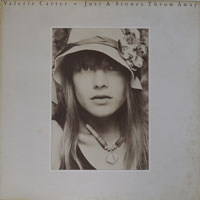 Valerie Carter made her
name as a backing vocalist for some serious ‘70s heavyweights, including Jackson
Browne, Linda Ronstadt, Don Henley and most significantly of all, Little Feat and James
Taylor. Later credits include work for Lyle Lovett and backing vocals on Shawn
Colvin’s fabulous Fat City. But she was also an accomplished (if not
prolific) songwriter and when it came time to release her first solo album, she was able
to call on some stellar backing musicians and vocalists of her own. The list of performers
on the back of this album runs halfway down the rear sleeve and includes Ronstadt, Deniece
Williams, Lowell George, Jeff Pocaro, Browne, Don Myrick, Sam Clayton and Paul Barrere.
And that’s just the top-line names. Not a bad backing band, featuring as it does,
pretty much the whole of Little Feat.
Valerie Carter made her
name as a backing vocalist for some serious ‘70s heavyweights, including Jackson
Browne, Linda Ronstadt, Don Henley and most significantly of all, Little Feat and James
Taylor. Later credits include work for Lyle Lovett and backing vocals on Shawn
Colvin’s fabulous Fat City. But she was also an accomplished (if not
prolific) songwriter and when it came time to release her first solo album, she was able
to call on some stellar backing musicians and vocalists of her own. The list of performers
on the back of this album runs halfway down the rear sleeve and includes Ronstadt, Deniece
Williams, Lowell George, Jeff Pocaro, Browne, Don Myrick, Sam Clayton and Paul Barrere.
And that’s just the top-line names. Not a bad backing band, featuring as it does,
pretty much the whole of Little Feat.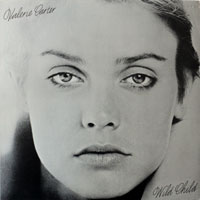 One word of caution: the
sleeve for this album is taupe (somewhere between dove gray and pale cream), a color that
marks quicker than a bridesmaid dress on a four-year old. It’s also printed on stock
with the consistency and absorbency of blotting paper. This is one sleeve that won’t
just sit there, waiting for the worst to happen; it will actively get up, go out
and seek noxious fluids and other blemish-inducing agents (the one I shot is probably the
cleanest example I’ve ever seen). The search for a pristine sleeve could well prove a
long and fruitless one, so in this case, it’s the vinyl you should be concentrating
on. My three copies all sound great, but one is slightly better and noticeably heavier
than the others, which border on flexidisc territory. Artwork, label and groove lands are
all otherwise indistinguishable, so it’s a case of buying what you find and then
buying something better if you see it.
One word of caution: the
sleeve for this album is taupe (somewhere between dove gray and pale cream), a color that
marks quicker than a bridesmaid dress on a four-year old. It’s also printed on stock
with the consistency and absorbency of blotting paper. This is one sleeve that won’t
just sit there, waiting for the worst to happen; it will actively get up, go out
and seek noxious fluids and other blemish-inducing agents (the one I shot is probably the
cleanest example I’ve ever seen). The search for a pristine sleeve could well prove a
long and fruitless one, so in this case, it’s the vinyl you should be concentrating
on. My three copies all sound great, but one is slightly better and noticeably heavier
than the others, which border on flexidisc territory. Artwork, label and groove lands are
all otherwise indistinguishable, so it’s a case of buying what you find and then
buying something better if you see it.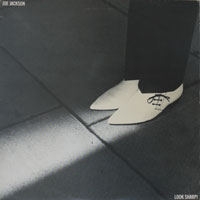 Okay, I know that Joe
Jackson isn’t exactly an unknown, but how many of you revere (or even own) this, his
first album? And what an album it is! As well as the timeless "Is She Really Going
Out With Him?" you get "One More Time," "Sunday Papers,"
"Happy Loving Couples," "Baby Stick Around" and "Fools In
Love," most of them on a first side that hits it out of the park. Indeed, if it
wasn’t for "Fools. . ." (possibly the best song here) many a record out
there would be in mint condition on side two.
Okay, I know that Joe
Jackson isn’t exactly an unknown, but how many of you revere (or even own) this, his
first album? And what an album it is! As well as the timeless "Is She Really Going
Out With Him?" you get "One More Time," "Sunday Papers,"
"Happy Loving Couples," "Baby Stick Around" and "Fools In
Love," most of them on a first side that hits it out of the park. Indeed, if it
wasn’t for "Fools. . ." (possibly the best song here) many a record out
there would be in mint condition on side two. Now, by way of a bonus, if you like
Look Sharp! don’t deny yourself the almost equally pleasurable experience of
the follow-up, I’m the Man [A&M AMLH 64794]. Released later that same
year either as a straight LP or (in the USA) as a box containing five 7" discs
[A&M SP-18000], the second album dials back the energy a notch, with an even more wry
and emotionally incisive perspective. Once again, the first side is a stormer, and the
recording, whilst it lacks the sheer energy and presence of the first outing, is only just
behind and quite a bit more refined to boot. Again, the early UK pressings (pictures and
lyrics on the in-sleeve) are the ones to go for, with deeper bass, better separation,
greater dynamics, more presence and immediacy, although again, the later pressings with
stamped matrix numbers are excellent. But the joker in the pack is the 7" set. This
betters the UK early release for dynamics and impact, if not quite matching it for weight
and body, while the vocals are the best of the lot. But -- and it’s a vital caveat --
only if you have adjustable VTA. The 7" 45s are significantly thinner than the albums
and will sound thin and gutless without -arm-height correction.
Now, by way of a bonus, if you like
Look Sharp! don’t deny yourself the almost equally pleasurable experience of
the follow-up, I’m the Man [A&M AMLH 64794]. Released later that same
year either as a straight LP or (in the USA) as a box containing five 7" discs
[A&M SP-18000], the second album dials back the energy a notch, with an even more wry
and emotionally incisive perspective. Once again, the first side is a stormer, and the
recording, whilst it lacks the sheer energy and presence of the first outing, is only just
behind and quite a bit more refined to boot. Again, the early UK pressings (pictures and
lyrics on the in-sleeve) are the ones to go for, with deeper bass, better separation,
greater dynamics, more presence and immediacy, although again, the later pressings with
stamped matrix numbers are excellent. But the joker in the pack is the 7" set. This
betters the UK early release for dynamics and impact, if not quite matching it for weight
and body, while the vocals are the best of the lot. But -- and it’s a vital caveat --
only if you have adjustable VTA. The 7" 45s are significantly thinner than the albums
and will sound thin and gutless without -arm-height correction. The three-piece Carmel was formed around the
vocal talents of Carmel McCourt, the bass of James Paris (later Parris) and the drums and
percussion of his cousin Gerry Darby. As the lineup suggests, their repertoire is very
much in the jazz/blues mold, with soulful renditions of established songs as well as their
own compositions a specialty. Despite the slightly offbeat material/style, the band
achieved some chart success, especially with the 1984 single "More, More, More."
But both the singing style and material, as well as the small-group format really lent
itself to live work, and small-venue performances were always central to the band’s
enduring popularity (they released regular albums up until 1998, and then a new release, Strictly
Piaf, in 2011). But what we have here is their first vinyl output, a six-track
mini-album that features five studio one-takes and a live track recorded at the
Hammersmith Palais a month later.
The three-piece Carmel was formed around the
vocal talents of Carmel McCourt, the bass of James Paris (later Parris) and the drums and
percussion of his cousin Gerry Darby. As the lineup suggests, their repertoire is very
much in the jazz/blues mold, with soulful renditions of established songs as well as their
own compositions a specialty. Despite the slightly offbeat material/style, the band
achieved some chart success, especially with the 1984 single "More, More, More."
But both the singing style and material, as well as the small-group format really lent
itself to live work, and small-venue performances were always central to the band’s
enduring popularity (they released regular albums up until 1998, and then a new release, Strictly
Piaf, in 2011). But what we have here is their first vinyl output, a six-track
mini-album that features five studio one-takes and a live track recorded at the
Hammersmith Palais a month later. 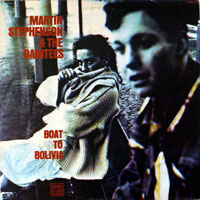 British
indie-pop label Kitchenware emerged from an arts-collective background in the early '80s
as a showcase for northeastern talent, embracing amongst others The Fatima Mansions and
The Kane Gang. The label still exists, with current act The Editors now riding high, but
they are a rare example of popular success from a house full of acts whose commercial
return never quite seemed to match their critical acclaim. Chief amongst those was one of
their earliest signings (1982), Martin Stephenson and The Daintees. Those first years of
the ‘80s was a time of deep social division in the UK, with the north/south divide
stretching to the breaking point. Often, resistance was the name of the game and to exist
was enough, so it wasn’t until 1986 that The Daintees actually got around to
releasing their first album, Boat To Bolivia -- but it was well worth the wait.
British
indie-pop label Kitchenware emerged from an arts-collective background in the early '80s
as a showcase for northeastern talent, embracing amongst others The Fatima Mansions and
The Kane Gang. The label still exists, with current act The Editors now riding high, but
they are a rare example of popular success from a house full of acts whose commercial
return never quite seemed to match their critical acclaim. Chief amongst those was one of
their earliest signings (1982), Martin Stephenson and The Daintees. Those first years of
the ‘80s was a time of deep social division in the UK, with the north/south divide
stretching to the breaking point. Often, resistance was the name of the game and to exist
was enough, so it wasn’t until 1986 that The Daintees actually got around to
releasing their first album, Boat To Bolivia -- but it was well worth the wait.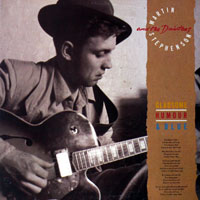 Again, this is a recording
that majors on gritty immediacy, and the track-to-track variation is huge, but when
it’s good it’s great, while the music is never less than arresting. From the
deeply reflective "Rain" to the biting edge of "Crocodile Cryer," the
sudden twist of "Coleen" to the hard truth of "Running Water," there
are songs here that will never pale, even in the watery light of a late Newcastle
afternoon. Gladsome, Humour and Blue [Kitchenware KWLP 8], the follow-up album
released two years later, is far more consistent and also a more polished production and
recording, with a plush gatefold sleeve, but all that polish has removed some of the grit.
It’s also a great album and well worth seeking out, but I still find myself taking
that Boat To Bolivia for the real deal.
Again, this is a recording
that majors on gritty immediacy, and the track-to-track variation is huge, but when
it’s good it’s great, while the music is never less than arresting. From the
deeply reflective "Rain" to the biting edge of "Crocodile Cryer," the
sudden twist of "Coleen" to the hard truth of "Running Water," there
are songs here that will never pale, even in the watery light of a late Newcastle
afternoon. Gladsome, Humour and Blue [Kitchenware KWLP 8], the follow-up album
released two years later, is far more consistent and also a more polished production and
recording, with a plush gatefold sleeve, but all that polish has removed some of the grit.
It’s also a great album and well worth seeking out, but I still find myself taking
that Boat To Bolivia for the real deal. The arts-collective culture that
spawned Kitchenware was more than just an institutional movement -- it was the broad
milieu that kept the artistic flame flickering under the twin threats of economic
depression and Conservative regression. When people feel threatened, almost anything goes,
and, ironically, the end result was an audience for exactly the sort of detached and
avant-garde artistic activity the then government so roundly despised. Loose amalgams of
performers came and went in a swirling pattern of cross-pollination and musical alliances,
some that survived -- some that didn’t. One such axis revolved around Alison Stratton
with Stuart and Philip Moxham, the original members of Young Marble Giants, one of those
commercially disastrous yet strangely influential bands that litter the history of pop.
The arts-collective culture that
spawned Kitchenware was more than just an institutional movement -- it was the broad
milieu that kept the artistic flame flickering under the twin threats of economic
depression and Conservative regression. When people feel threatened, almost anything goes,
and, ironically, the end result was an audience for exactly the sort of detached and
avant-garde artistic activity the then government so roundly despised. Loose amalgams of
performers came and went in a swirling pattern of cross-pollination and musical alliances,
some that survived -- some that didn’t. One such axis revolved around Alison Stratton
with Stuart and Philip Moxham, the original members of Young Marble Giants, one of those
commercially disastrous yet strangely influential bands that litter the history of pop.